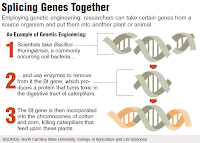Global warming is the increasing temperature of earth surface, it had
happened since the mid-20th century and it is still continuing until
now. Global warming is a bad thing for the earth and the life on it.
Many things cause global warming. Earth naturally insulted by a
delicate balance of heat-trapping (greenhouse) gases in the atmosphere.
These gases protect the earth, when the sun shines on the earth, these
gases absorb some the heat of the sunlight to keep the earth warm
enough to support the life. However, human activities since the
industrial revolution have released more and more carbon dioxide so it
has increased the concentration of greenhouse gases. The other gases
that become greenhouse gases in the atmosphere are methane,
tropospheric ozone, CFCs, and nitrous oxide. The increasing of these
gases in the atmosphere makes more and more heat that is trapped in the
atmosphere, so it makes temperature increase too. That is the most
important thing that causes global warming. There are still many things
that cause global warming and they are still caused by human
activities, for example deforestation.
Global warming brings damaging effects for the earth and the life on it, for example:

 Rising sea levels, leading to more coastal erosion, flooding during storms, and permanent inundation.
Rising sea levels, leading to more coastal erosion, flooding during storms, and permanent inundation.Increase drought and increase incident of wildfires.
Impact on human health because mosquitoes and other disease-carrying insects and rodents spread diseases over larger geographical regions.
Disruption of agriculture.
Climate changes.
Global warming is the worst thing that may happen in the earth, but it doesn’t mean that global warming progress cannot be hampered. We can solve this global warming problem to avoid the worst effect of global warming. These are some ways that we can do to solve global warming:
Do not cut down the tree. We must plant the trees and keep them well.
Minimize the used of electricity.
Save the water.
Reduce the used of car and motorcycle because every time we drive a car, we release carbon dioxide and other heat-trapping gases into the air.
Minimize the used of AC.
Every little thing that we do now will determine the kind of world in the future, so keep saving the earth.
Source : http://verayaniarif.wordpress.com/2010/10/05/explanation-text-about-green-house/





